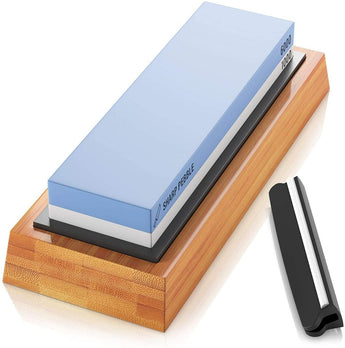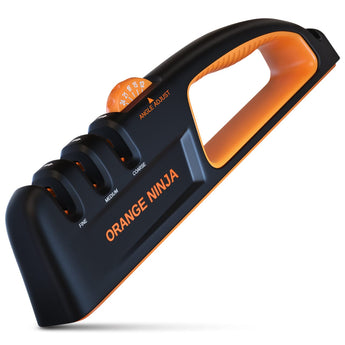
When you’re starting something new or learning a new skill, things could get pretty confusing quite quickly. From countless “expert” opinions to plethora of information scattered across the internet, it gets tricky to decide where to begin.
Learning to sharpen a tool isn’t an exception to the above predicament; if you’re just starting out, it could indeed leave you scratching your head sometimes. The purpose of this two-part discussion is to familiarize newbies with the fundamentals of knife sharpening.
Rest assured if you’re willing to put in a bit of effort, not only will you be adding a pretty useful skill but the entire process will be a joy to be a part of.
Knowing when to sharpen: First thing’s first, you need to be able to tell the difference between when a knife needs a sharpening session or if it’s perfectly fine. Following are the key indications that you need to look out for in order to determine whether the time has come to sharpen.
-
The knife isn’t cutting cleanly: It’s important to first understand what qualifies as a sharp blade. For most people, if a knife is able to hack an apple into half, a knife qualifies as sharp. That is incorrect. A knife should be able to impart a clean cut without any friction or resistance on the edge.
There are a couple of handy ways that will give you a pretty good idea of the blade’s sharpness. Swipe your knife against a piece of paper. It should be able to cut through without facing any resistance. Pull or resistance on the blade means that it isn’t optimally sharp. Another way to try is to cut a soft vegetable such as a tomato or a pepper. The knife should be able to cleanly take off the skin from the pepper’s side or should cut the tomato with the minimum of pressure.
-
Ragged uneven edge: It’s crucial that you regularly observe the edge of your knives. The idea is to look for any unevenness in the edges. There are two reasons why your knife may end up with a ragged edge. One, if your knife is being constantly subjected to high-pressure chopping jobs then the metal will chip off from the edge, leaving it ragged and uneven.




Thanks for the help, looking forward for part 2